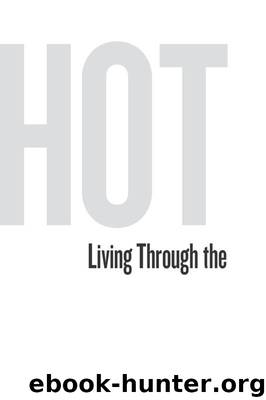Hot by Hertsgaard Mark

Author:Hertsgaard, Mark [Hertsgaard, Mark]
Language: eng
Format: mobi, epub
"The Character of Our Wines Was Changing"
Perhaps the leading exception to the trend is Alois Lageder, whose family has made wine in Alto Adige, the northernmost province in Italy, since 1855. The setting, at the foot of the Alps, is majestic. Looming over the vines are massive outcroppings of black, white, and gray rock interspersed with flower-strewn meadows and wooded hills that inevitably call to mind The Sound of Music. Inspired by the legendary California winemaker Robert Mondavi, Lageder led Alto Adige's evolution from its jug wine past to producing some of the best white wines in Italy today. (Alto Adige produces only 0.7 percent of Italy's wine but is responsible for 10 percent of its premium wine production.) In October 2005, Lageder hosted the world's first conference on the future of wine under climate change. His personal prestige helped draw a good-sized crowd; some four hundred growers, winemakers, and other experts from Alto Adige and neighboring provinces attended. "We must recognize that climate change is not a problem of the future," Lageder told his colleagues. "It is here today and we must adapt now. Winemakers must be willing to experiment and adapt if they wish to survive under climate change."
Embracing experimentation himself, Lageder has increased his wine's quality even as he introduced biodynamic farming. Grounded in an almost mystical belief in the superiority of natural processes, biodynamic farming goes a big step beyond organic farming. Compost replaces fertilizer; ground cover and mulch substitute for irrigation; in some cases, planting and other key activities are timed to the cycles of the moon. Skeptics dismiss it as woolly-headed nonsense, but "this was how all of our ancestors practiced agriculture, and it has many advantages," said Lageder, adding, "My mother always used biodynamic methods in her own garden."
To illustrate the point, Lageder, a slender man with receding brown hair, took me for a tramp in his vineyards. "Look here," he said, kneeling down and digging his index finger into the earth beneath vines that would produce his coveted Lowengang label Cabernet Sauvignon. "See how easy it is for me to penetrate this soil? This is an indication of how healthy [the soil] is with lots of humus; the water, air, worms, and microorganisms pass through it and let it breathe. Now, try to do the same over here," he said, pointing to vines fifteen feet away that belonged to a neighbor who farmed conventionally.
I knelt and pressed my finger into the neighbor's soil, but it was unmovable—dry and crusty. Lageder then pinched off a leaf from his neighbor's vines and a leaf from his own and placed them on the dashboard of his car. It was a warm day, and when we returned to the car an hour later, his neighbor's leaf was wilted, but Lageder's still had plenty of life in it. "Biodynamic farming is helpful in storing water in the soil, and this keeps the vines healthier," Lageder explained. "We have found we have not had to irrigate during hot summers when our neighbors did have to irrigate.
Download
This site does not store any files on its server. We only index and link to content provided by other sites. Please contact the content providers to delete copyright contents if any and email us, we'll remove relevant links or contents immediately.
The Secret History by Donna Tartt(18934)
The Social Justice Warrior Handbook by Lisa De Pasquale(12162)
Thirteen Reasons Why by Jay Asher(8831)
This Is How You Lose Her by Junot Diaz(6827)
Weapons of Math Destruction by Cathy O'Neil(6202)
Zero to One by Peter Thiel(5721)
Beartown by Fredrik Backman(5662)
The Myth of the Strong Leader by Archie Brown(5450)
The Fire Next Time by James Baldwin(5370)
How Democracies Die by Steven Levitsky & Daniel Ziblatt(5165)
Promise Me, Dad by Joe Biden(5109)
Stone's Rules by Roger Stone(5046)
A Higher Loyalty: Truth, Lies, and Leadership by James Comey(4901)
100 Deadly Skills by Clint Emerson(4872)
Rise and Kill First by Ronen Bergman(4733)
Secrecy World by Jake Bernstein(4696)
The David Icke Guide to the Global Conspiracy (and how to end it) by David Icke(4651)
The Farm by Tom Rob Smith(4461)
The Doomsday Machine by Daniel Ellsberg(4442)
